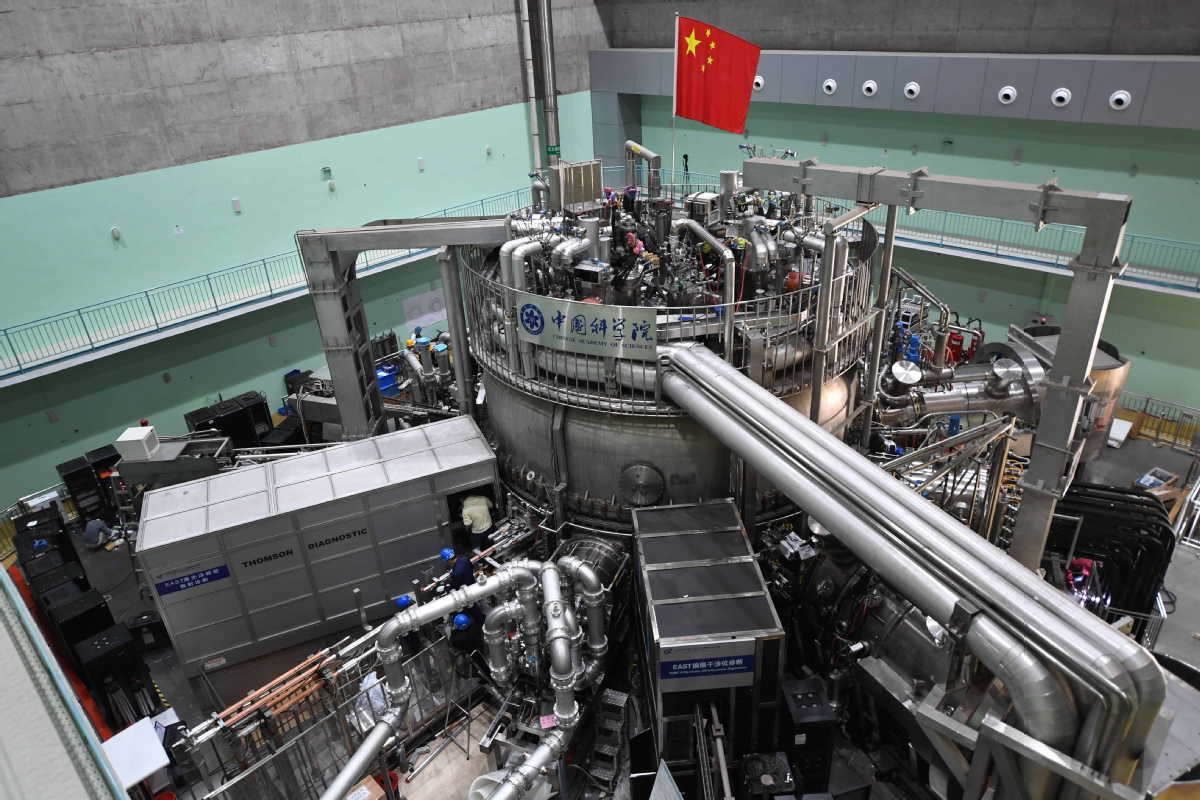For the first time, researchers in South Korea were able to keep a nuclear fusion reaction going for 30 seconds at temperatures beyond 100 million degrees Celsius, which is approximately seven times hotter than the Sun’s core.
It represents a significant step toward achieving viable fusion power, which promises virtually endless clean energy by replicating the processes that naturally take place inside the Sun.
NEWS ?: South Korea's "artificial sun" reached 100 million °C for more than 20 seconds. Over 7 times hotter than the Sun itself pic.twitter.com/wtqt018y4n
— Latest in space (@latestinspace) September 12, 2022
The latest achievement of heat and stability simultaneously brings researchers one step closer to a workable fusion reactor, even though the duration and temperature do not set records.
Nuclear fusion is a viable technique for generating power because vast amounts of energy are produced when two nuclei with low atomic weights merge. The primary benefit of nuclear fusion is that the outcome is not radioactive and hence does not necessitate the containment measures required for nuclear fission technology.
The difficult element of nuclear fusion is not producing the reaction. Scientists have invented various methods, including compressing matter with lasers and running superheated gas in a circle. The challenge is sustaining this reaction so power plants can harness the energy.
The tokamak, a doughnut-shaped device with a ring of hot gas known as plasma trapped by powerful magnets, is one of the top contenders for a stable nuclear reactor. The term “plasma” refers to stuff that has had its electrons removed from its atoms, creating a charged gas.
The tokamak technology has undergone several improvements, from temperature increases to size reductions. Engineers still have trouble getting tokamaks to circulate plasma at high temperatures for an extended period. Plasma instabilities can disrupt reactions and harm equipment if they come into contact with the reactor’s walls.

A team from Seoul National University and the Korea Institute of Fusion Energy conducted experiments with the reactor at the Korea Superconducting Tokamak Advanced Research (KSTAR). The team succeeded in improving the technology for containing the plasma at the reactor’s core.
On September 7, the research was published in the scientific journal Nature. The publication indicates that the researchers only encountered temperatures of 100 million degrees Celsius for 20 seconds.
However, the study’s author, Yong-Su Na of Seoul National University, later informed New Scientist that the reaction lasted 30 seconds.
/2022/09/08/image/jpeg/OppJDaIxqqI4MGui5411TBLNNXFBW3mpTvVacO4R.jpg)
In 2021, a similar facility in China could operate for over 17 minutes at a slightly lower temperature. The plasma was five times hotter than the Sun at 70 million degrees Celsius.
The process has been dubbed the “holy grail” of clean energy because it uses no fossil fuels and produces no hazardous waste, in contrast to current nuclear energy production processes.
“We usually say that fusion energy is a dream energy source – it is almost limitless, with low emission of greenhouse gasses and no high-level radioactive waste – [but the latest breakthrough] means fusion is not a dream,” said Yoo Suk-jae, president of the Korea Institute of Fusion Energy.
The Korea Institute of Fusion Energy set a target at the beginning of the year to reach plasma temperatures of more than 100 million degrees for 50 seconds by the end of 2022, with a final objective of 300 seconds by 2026.
Methods To Contain plasma
The best approaches to keep the plasma contained inside the nuclear fusion reactor are still being researched. One such technique is to use the magnetic fields to produce an edge transport barrier (ETB), which prevents heat and plasma from escaping by creating a sudden cut-off in pressure close to the reactor wall.
Another method is establishing a higher pressure closer to the plasma’s center, known as the internal transport barrier (ITB). Yong-Su Na and colleagues at SNU modified the ITB method to produce a reduced plasma density.
Their research at the Korea Superconducting Tokamak Advanced Research (KSTAR) appears to increase the plasma’s core temperature, which surpassed 100 million degrees Celsius in this case.
This is a vital part of nuclear fusion because high temperatures are required to extract energy from the process. Both the ETB and the ITB are known to cause instability. However, the procedure utilized by KSTAR researchers exhibited stability and was only halted owing to hardware limits.
The fast-ion-regulated enhancement (FIRE), or more energetic ions in the center of the plasma, is thought to have played a crucial role in maintaining the plasma’s stability at such high temperatures. However, the researchers are still unsure of the exact mechanisms at work.

KSTAR has been shut down for modifications, and Na says replacing the carbon in the reactor’s wall with tungsten will increase experiment reproducibility, New Scientist said in its report.
The experts believe that longer experiments in the future could advance efforts to develop a nuclear fusion reactor. Such discoveries are indeed advancing the field of nuclear fusion. However, challenges are increasingly shifting away from physics.
The most pressing challenge is whether energy could be economically extracted from a fusion reactor to generate electricity. Without it, the technology cannot scale.
- Contact the author at ashishmichel@gmail.com
- Follow EurAsian Times on Google News




